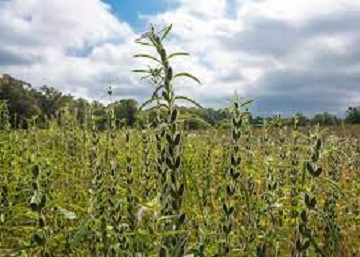The smallholder farmers in northern Kenya live and farm the sparse land within the Counties. For instance, areas along River Dawa. However, despite this fortune, the agro-pastoral communities have been marginalized yet they manage a considerable percentage of the country’s livestock population with limited reliance on agriculture as a source of livelihood. The most recent change in climate has seen the region witnessing prolonged drought causing devastating pressure on livestock survival. Sesame crops are highly resistant to drought and can provide good harvests, when soil moisture is adequate. Good harvests of sesame can be expected during rainfall of 300-600mm given the plant is highly susceptible to water-logging, and can therefore only thrive during moderate rainfall- a climate that highly favors the northern parts of Kenya.
With the lack of a proper climate to grow the majority of the traditional crops which are highly dependent on rainfall, Sesame is a highly profitable crop because it does well when there is shortage of rain. When sesame germinates, the probability of failure, especially when rains disappear is minimal. This therefore creates an incentive for this project in northern parts of the country with limited rainfall. In extremely dry seasons, irrigation is done from River Dawa that originates from Ethiopia and flows joining the mighty River Juba in Somalia.
Our Intervention:
Farmed Integrate Africa is planning to implement a 10,000 ha commercially viable mechanized Sesame Seed Farming in Northern Kenya through partnerships with communities and local groups.

